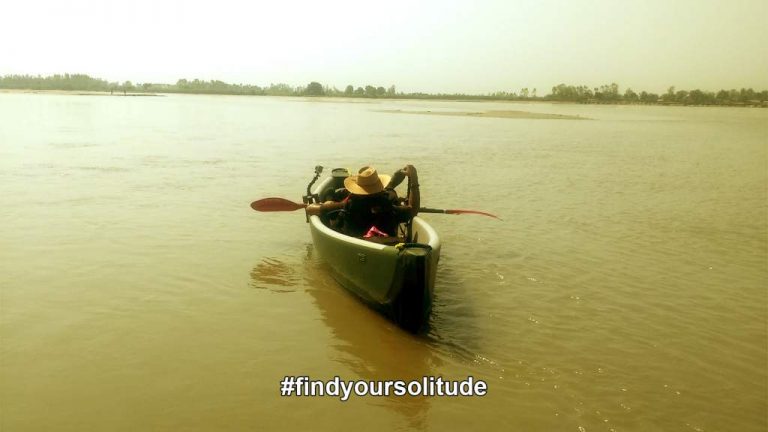The imminent War in which everyone will lose
For the past couple of decades I have been quite firm in my belief that the next great war … World War III, if you will … will be fought over the control of water resources and not over oil or WMDs or terrorists or any other kind of geographical and territorial domination.
Lately, I have been coming across a whole lot of websites, blogs and documents paralleling my belief. Despite the fact that this little blue planet we call home, the third rock from the Sun, is covered almost three fourths by water, the water that is fit for human consumption and agriculture is barely 1% of this vast unusable resource. And much of this is inaccessibly trapped in ice caps and glaciers. Compound this fact with the reality of growing number of humans vying for this finite resource and the problem suddenly becomes too big to comprehend. The aquifers are drying up and despite what optimists might believe, these will not get recharged in a hurry.
Water is essential for life. Without water to drink we will not survive for more than a few days.
Without water we will not be able to irrigate our fields. Without water many cities and towns and even countries will disappear. With global warming and climate change (or whatever moniker we wish to give it) being accelerated, ice fields are melting, snow capped mountains are giving way to barren landscape, glaciers are receding. Sea levels are rising which will result is coastal cities being inundated. Geographies and boundaries will get redefined, the human race will face an existential crisis.
Everyone knows, or at least should know that water is a resource that is finite.
The absolute amount of water on Earth has remained the same since the Earth was formed. It only changes its form. Whether in liquid, solid or gaseous form, the water is either resident in the clouds, or settles as ice and snow, or flows in our rivers, lakes and ponds. Increasingly, with rivers drying up and lakes disappearing, the water is finding its way to the oceans and seas, making it either impossible or exceedingly expensive to recycle to make it usable by humans. Not surprisingly, the countries with the highest investment in desalination plants are the most developed ones, the ones with the most money to invest. The per capita water usage of citizens of countries that are not so lucky compared to those who happen to live in more privileged surroundings.
India is increasingly facing a water crisis. It is presumed that in the next decade or so, the majority of the population will come under acute water shortage. Water unfortunately is not like energy. When we have run out of one kind of energy, we have devised and discovered alternative sources. With fossil fuels running out, there will be other resources that will become viable … wind, solar, nuclear, etc. Not so with water. The amount of water is what it is and there is no alternative. Without water, a person can die in just a few days.
This not a crisis about to happen, but the crisis is already in our lives.
It is a matter not so much of water usage, but of water management. Gone are the days when we could childishly keep the tap running while we completed brushing our teeth or shaving. The luxury of a shower has to be replaced with using the bucket and a mug. We need to harvest rain water. We need to recycle waste water. We need to find more efficient crop management systems. We need to take a serious relook at the gadgets and gizmos we use for personal hygiene … showerheads, cisterns, and taps. We need to reduce the city aesthetics by insisting sidewalks not be paved, thus allowing recharging of the aquifers. More trees need to be planted, not uprooted to make way for housing colonies and highways.
There is enough and more water n our oceans and seas. Unfortunately, all of it is unusable and unfit for consumption. More and more desalination plants are coming up all over the world. However, these are energy guzzlers and very expensive to run and maintain. Moreover, we are depleting the finite resources of fossil fuels to maintain the levels of yet another finite resource. This cannot be sustainable in the long run.
The possible solution is to create desalination plants using an otherwise infinite resource … sunlight.
The tropical zone around the world fortunately gets enough sunlight throughout the year. This is also the region that has the most deserts, a lot of poverty, and a dearth of drinking water. Installing large solar farms to desalinate takes up a lot of real estate that could otherwise be more productively utilised. The answer lies in miniaturisation. Instead of large desalination plants run and maintained by public utilities, the system needs to be “democratised”. Instead of one large desalination plant, if every home had a plant, large enough to cater to the family’s needs, the situation could possibly become more effective and a lot cheaper. The utility companies need only have plumbing to send salt water to individual homes, who then desalinate according to their individual needs. The advantage of home-level desalination systems has a two-fold solution … it not only makes salt water drinkable, but can also treat contaminated fresh water, including waste water. Depending on where the region is located, maybe far away from the sea, contaminated water can be pumped to individual homes, for the homes to make their own drinking water.
DIY desalinators are very simple to make and relatively inexpensive to construct. This is a possible solution for regions that do not have too much money to invest in more complex systems. This may be a simplistic solution, but we need to start thinking out of the box. If we do not take immediate remedial measures, the day may not be too far away when we do not have water to drink or cook or wash our clothes and dishes.
Let us prevent the next big war … at least as far as water resources are concerned.
![]()





